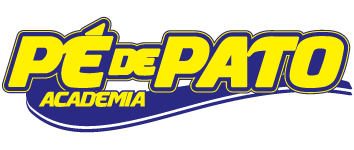Building on the intriguing question Can Parrots Use UV Vision in Space Navigation?, this article explores how ultraviolet (UV) vision not only enhances avian navigation on Earth but also offers fascinating possibilities for space exploration. Understanding these mechanisms provides a window into the evolutionary innovations of birds and their potential applications beyond our planet.
1. The Evolutionary Advantages of UV Vision in Birds
a. How UV sensitivity enhances navigation and foraging on Earth
UV vision provides birds with a distinct advantage in locating food sources and navigating complex environments. Many bird species can detect UV-reflective cues on plants, prey, and water bodies, which are invisible to humans. For example, ultraviolet markings on flowers guide pollinators, and UV reflective patterns on prey like insects aid in accurate targeting during flight. Similarly, water surfaces reflect UV light differently depending on depth and clarity, helping birds identify suitable drinking spots or fishing areas.
b. The evolutionary pressures leading to UV vision development in different bird species
The development of UV sensitivity has been driven by ecological niches that favor visual differentiation. For instance, seabirds and shorebirds inhabiting coastal areas rely heavily on UV cues to locate prey beneath reflective water surfaces. Likewise, nectar-feeding birds like hummingbirds benefit from UV-visible flower markings that enhance foraging efficiency. Evolutionarily, species exposed to environments with high UV reflectance or complex visual backgrounds have naturally selected for UV-sensitive visual systems.
c. Comparative analysis: UV vision in terrestrial vs. avian space-adapted environments
While terrestrial birds exploit UV vision primarily for navigation, foraging, and communication, the question arises: how might this capability translate to space-adapted environments? In Earth’s atmosphere, UV perception is influenced by atmospheric scattering and pollution, which can distort UV signals. Conversely, in space or extraterrestrial habitats, the absence of atmospheric interference could enhance UV-based navigation systems, allowing for precise environmental mapping. Thus, understanding UV vision’s evolutionary development on Earth provides a foundation for engineering advanced navigation tools for space habitats.
2. The Role of UV Vision in Navigational Landmarks and Environmental Cues
a. How UV patterns on the landscape assist in orientation and distance estimation
UV-reflective patterns on natural features, such as mineral deposits, vegetation, and water bodies, serve as reliable landmarks for birds during migration or local movement. These cues are often invisible to predators and humans, providing a stealthy and efficient navigation system. For example, certain rocks and plants reflect UV light distinctly, enabling birds to calibrate their position relative to these landmarks, thus aiding in precise orientation and distance measurement.
b. The use of UV-reflective signals in bird communication and territory marking
UV signals also play a critical role in social interactions among birds. Many species display UV-reflective plumage or markings as signals of dominance, mating readiness, or territory boundaries. These visual cues are especially effective in dense foliage or low-light conditions, where UV reflection enhances visibility. Recognizing such signals allows birds to avoid conflicts and establish hierarchies, illustrating how UV perception extends beyond navigation to complex social behaviors.
c. Potential differences in landmark recognition in terrestrial versus extraterrestrial settings
In extraterrestrial environments, the nature of landmarks would drastically change. Instead of terrestrial features, artificial UV-reflective markers or natural UV signatures of planetary surfaces could serve as navigation aids. For example, UV-sensitive sensors could detect mineral compositions unique to planetary terrains, aiding spacecraft or robotic explorers in orientation. The principles remain similar—using UV cues for recognition and navigation—but adapted to the context of space exploration.
3. UV Vision and Atmospheric Interactions: Implications for Flight and Orientation
a. How atmospheric UV light scattering influences bird navigation
Earth’s atmosphere scatters UV light through Rayleigh scattering, creating a UV-rich sky that aids birds in navigation, especially during migration. This scattering enhances the contrast of UV-reflective landmarks and celestial cues like the UV signature of the Milky Way, which some migratory birds utilize for orientation. The temporal and spatial variations in atmospheric UV levels influence navigation accuracy, making birds sensitive to these subtle changes.
b. The impact of atmospheric conditions and pollution on UV perception
Pollution, smog, and cloud cover significantly diminish UV transmission, impairing birds’ ability to use UV cues effectively. Studies show that increased particulate matter in the atmosphere reduces UV reflectance, leading to disorientation or increased energy expenditure during migration. This understanding emphasizes the importance of clean atmospheric conditions for natural UV-based navigation and raises concerns about environmental pollution’s impact on avian species.
c. Lessons from Earth’s atmosphere for understanding UV perception in space environments
In space, the absence of atmospheric interference allows for unimpeded UV perception, which can be harnessed for navigation systems. Future spacecraft equipped with UV sensors might emulate bird visual systems to detect UV signatures of celestial bodies or artificial markers. Moreover, understanding atmospheric effects on UV light guides engineers in designing artificial UV illumination and detection systems that mimic natural conditions, facilitating navigation in variable space environments.
4. Beyond Earth: Theoretical Models of UV-Sensitive Navigation in Space
a. How UV vision could be utilized for navigation in space habitats or spacecraft
In controlled environments like space stations or habitats, UV illumination could be integrated with sensor arrays modeled after avian visual systems. These sensors would detect UV-reflective surfaces or markers, enabling autonomous navigation and orientation without relying solely on GPS or inertial systems. Such systems could improve spatial awareness in environments where traditional navigation signals are limited or unavailable.
b. Challenges of UV perception in the vacuum and radiation-rich environment of space
UV light behaves differently in space, as vacuum conditions eliminate scattering but pose radiation challenges. Sensitive UV detectors must be shielded against cosmic rays and radiation to prevent damage. Additionally, the lack of atmosphere means UV signals must be artificially generated or reflected from surfaces designed for this purpose, complicating system design but offering precise control over navigational cues.
c. Potential technological mimics inspired by bird UV vision systems for space exploration
Engineers are exploring biomimicry by developing UV-sensitive imaging systems modeled on bird eyes. These systems could enable robots or spacecraft to detect UV-reflective minerals, ice, or artificial markers on planetary surfaces, enhancing autonomous navigation. Such technology could revolutionize space exploration by providing reliable environmental mapping and hazard detection in UV-rich or UV-absent environments.
5. The Neural and Visual Processing of UV Light in Birds
a. How the avian brain interprets UV signals for spatial awareness
Birds possess specialized neural pathways that process UV information, integrating it with other visual and environmental cues. The optic tectum and associated visual cortex areas are adapted to interpret UV signals, enabling rapid decision-making during flight. Recent neuroimaging studies demonstrate that UV perception activates distinct neural circuits, highlighting the complexity of avian visual processing.
b. The adaptation of visual cortex areas for UV processing in different species
Genetic and anatomical studies reveal that UV-sensitive cone cells are concentrated in specific regions of the avian retina, with corresponding neural adaptations in the brain. For example, UV-sensitive species like kestrels and pigeons exhibit enlarged or specialized visual cortex areas dedicated to UV processing, supporting their complex navigational and social behaviors.
c. Implications for artificial vision systems designed for space navigation
Understanding the neural basis of UV perception informs the development of artificial vision systems that replicate these biological processes. Incorporating neural-inspired algorithms can enhance the robustness and adaptability of space navigation sensors, enabling autonomous vehicles to interpret UV cues accurately, even in challenging or novel environments.
6. Bridging the Gap: From Parrots on Earth to Hypothetical Space Navigators
a. Can the mechanisms of UV perception in parrots inform space navigation tools?
Parrots, like many UV-sensitive birds, process UV signals through specialized retinal cells and neural pathways. Mimicking these biological systems, engineers are exploring UV-based sensors capable of detecting planetary surface markers or celestial UV signatures. Such bio-inspired tools could enhance the autonomy and accuracy of spacecraft, especially in environments where traditional navigation signals are weak or absent.
b. Exploring the limits and possibilities of extending UV vision capabilities beyond Earth
While biological UV vision is inherently limited by the visual system’s sensitivity, technological advancements allow us to extend this range artificially. Combining UV sensors with machine learning algorithms could enable space explorers—whether robotic or human—to interpret UV cues for navigation across diverse extraterrestrial terrains, opening new frontiers in exploration capabilities.
c. Final thoughts: How understanding UV vision in birds deepens our insights into navigation both on Earth and in space
Studying UV perception in birds reveals fundamental principles of environmental sensing and neural processing. These insights not only illuminate evolutionary adaptations but also inspire innovative technological solutions for navigation challenges beyond our planet. As we continue to unravel the complexities of avian UV vision, the boundary between biological inspiration and engineering innovation becomes increasingly intertwined—paving the way for smarter, more adaptable navigation systems in space exploration.

